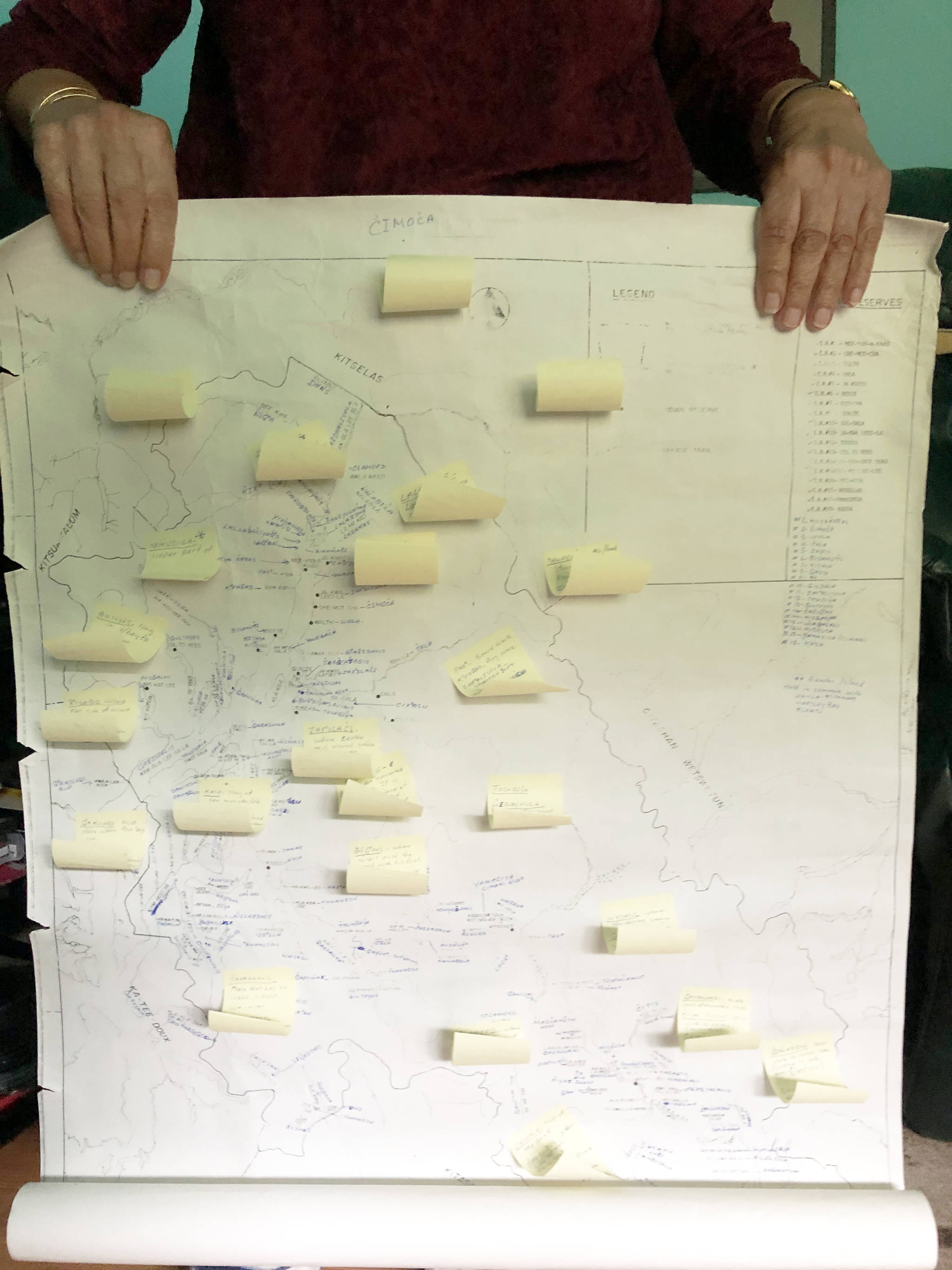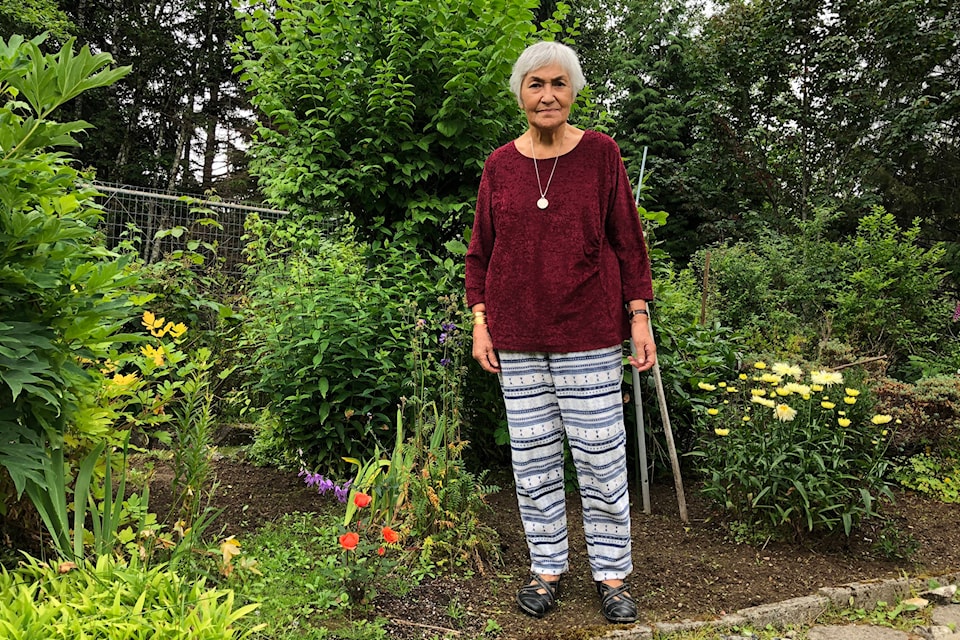Louise Barbetti has had a passion for learning since she was a child. Growing up in Kitamaat Village, Barbetti only spoke Haislakala, the Haisla language, which unfortunately became a difficulty when she started school.
“I can remember the first day of school, when I first went to school. I was so excited, I was going to learn all this [new information],” Barbetti said. “And I didn’t speak a word of English. So, I thought that, well this man is going to teach me all the things that I really want to learn.”
Barbetti’s father didn’t allow her to go to school until she was nine years old, but she remembers that day like it was yesterday. She also remembers running home at the end of the school day and finding her mother in the kitchen to tell her about the experience.
“I went up to [my mother] and I looked at her and I said, ‘I didn’t learn anything today.’ I didn’t know what the man was saying because I didn’t understand. I didn’t realize he was speaking English.”
Despite the language barrier, Barbetti was eager to stay at school.
“I was determined to learn,” Barbetti said. Her cousins spoke a bit of English and taught her to say ‘yes’ and ‘no’. That got her through until she was able to learn enough English to understand her lessons, which Barbetti said was difficult because Native children were often placed in their own ‘special’ classes, deemed less intelligent because they didn’t understand English.
“I realized that our kids are just as smart as the [white] kids, some of them are even smarter. And yet they were in…the special classes,” Barbetti said. “The teachers didn’t realized that we were away from everybody, so we didn’t learn English.”
Once she got older, Barbetti worked as a counsellor for students from Kitamaat Village at the high school in Kitimat for much of her life. The main issue she dealt with was the fighting between the Native students and the white students.
“I couldn’t believe the amount of problems that stemmed from the Native kids and the [white] kids,” Barbetti said. “Eventually there were staff members that realized the amount of problems in the high school. Because everybody knew it, but…nobody really looked at it.”
Barbetti worked at the school for 30 years and, during her time there, started acting as a counsellor for Native children in the elementary schools, as well.
“There was a group of teachers there that was really doing their job, plus helping the students from here. But there was just a handful,” Barbetti said. “Gradually staff began to realize what I was pointing out. And I soon realized I can’t be speaking to the teachers and the administrators as nicely as I was brought up to speak to people. So I began to fight back.”
At first, Barbetti didn’t know where she was going to start on dealing with the issues, because the problem of in-fighting between the Native and white students was just so huge. One of the problems she noticed was the lack of dental hygiene available to the kids from Kitamaat Village, resulting in many attending school without their two front teeth.
“[The Native students] were bright, but because of the lack of hygiene for their teeth…the [white] kids looked at them and said, ‘Ha ha, toothless Indian!’ or ’stupid Indian’ or stuff like that.”
Over time, the kids from the Village began to see what was happening between them and the white students.
“One of the young girls, she came to me and she said, ‘You know, I can’t stand the [white] boys. They’re really mean.’ She said, ‘They’re calling me names and I don’t even know them,’” Barbetti said. “I don’t know how many times she came into my office and just cried.”
However, Kitamaat Village had recently hired a young man to teach martial arts to children, and Barbetti said that the young girl was going to the classes and was very good. Knowing this, Barbetti told her to fight back the next time someone tried to attack her.
“So, the next time, she gave it to him!”
Barbetti was called to come help deal with the fight. However, the principal understood what she was dealing with and was understanding of the issues the Native children faced. Because of that, the boy was expelled, and the girl was able to continue her schooling.
“Things began to change at the school after that,” Barbetti said. “The Village kids and [white] kids began to be friends.”
Barbetti retired the year that the Kitimat and Terrace school districts amalgamated, and the relationship between the Native and white students was much better than when she had first begun.
“When I left the school, it was so much better. But it was a big fight.”
The change of language knowledge was one of the biggest things Barbetti noticed during her time working at the high school. English as a Second Language (ESL) classes were brought in for students, not because of the students from Kitamaat Village, but because there were people coming from all over the world to work at Alcan and their kids needed to learn English.
“When the parents [of my mother’s age] realized what was happening, you know, everybody learned English,” Barbetti said. “So now the young kids don’t speak Haisla.”
Barbetti is one of the few people left who are fluent in Haislakala, which she said helped her connect with many of the Native students during her time at the school.
“That was how I got involved to the kids, because I spoke Haisla perfectly.”
Barbetti was part of the initial language revitalization and preservation project many years ago, which included helping create the Haislakala dictionary, among other things. She still speaks Haislakala with her friends and family today, but understands why it’s a hard thing for many Haisla members to learn.
“It’s very difficult when you’re only speaking English, unless you’re determined to learn [Haislakala].”
Along with her work on language preservation, Barbetti worked tirelessly on projects to help protect the Kitlope, a temperate rainforest in B.C. sacred to the Haisla community.
Her key focus was a map of the names of all the different places that were important to Haisla people from the Kitimat River to the Kitlope.
Barbetti was on the Haisla Nation Council for many years, which is how she got involved with the Kitlope projects, and the map took her two-and-a-half years to finish.
“This was the beginning of our fight to save Kitlope,” Barbetti said. “I worked ‘till all hours of the night [on] the map, because that was the background of our fight.”
Most of the work Barbetti did was behind the scenes, because she realized many of the things wouldn’t work if people knew that they were happening. Her work on the Council, with the Haisla language preservation, and for the schoolchildren was all equally important to her because it kept her involved with her traditional culture and helped move the Haisla community forward.
“I realized that I’m not one of the people that’s going to stand up there, because that doesn’t make any difference,” Barbetti said. “But where I am going to make a difference is behind the lines. So, that’s what I did.”
clare.rayment@northernsentinel.com
Like us on Facebook and follow us on Twitter

